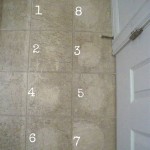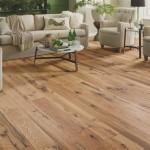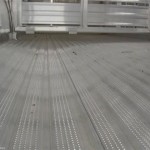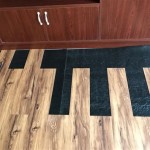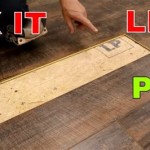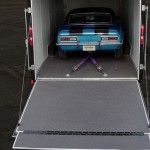Plywood Plank Flooring Reviews And Complaints: A Comprehensive Overview
Plywood plank flooring has emerged as a reasonably affordable and potentially sustainable alternative to traditional hardwood flooring. However, like any building material, it is subject to both positive reviews and negative complaints. Understanding the specific advantages, disadvantages, and common issues associated with plywood plank flooring is essential for homeowners and contractors considering its use. This article aims to provide a detailed and objective examination of plywood plank flooring, focusing on real-world reviews and frequently cited complaints.
The construction of plywood plank flooring typically involves a multi-layered structure. A top veneer, often made of hardwood or a pre-finished surface, provides the aesthetic appeal and wear layer. This veneer is then bonded to a core composed of multiple layers of plywood, offering dimensional stability and structural support. The bottom layer often mirrors the core construction, preventing warping and ensuring a level surface for installation. Different manufacturers employ different adhesives and construction techniques, which directly influence the durability, cost, and environmental impact of the final product.
Advantages of Plywood Plank Flooring
Plywood plank flooring boasts several advantages that contribute to its growing popularity. These advantages range from cost-effectiveness to dimensional stability, making it an appealing option for specific applications.
One of the primary advantages is its cost. Compared to solid hardwood or engineered hardwood flooring, plywood plank flooring is generally more affordable. The reduced material costs, particularly in the core layers, translate to lower prices for consumers. This affordability makes it a viable option for budget-conscious homeowners who desire the look of hardwood without the associated expense.
Dimensional stability is another significant benefit. Plywood’s multi-layered construction minimizes warping and expansion/contraction in response to changes in humidity and temperature. This stability is particularly advantageous in areas with fluctuating climate conditions where solid hardwood flooring might be more prone to movement and damage. This inherent stability also reduces the likelihood of gaps forming between planks over time.
Ease of installation can also be a contributing factor. Many plywood plank flooring products are designed with click-lock systems, simplifying the installation process. This ease of installation can reduce labor costs for those choosing professional installation or allow for DIY installation for homeowners with some experience. A simpler installation process also minimizes potential errors and reduces the time required to complete the flooring project.
Furthermore, plywood can be sourced from sustainably managed forests, making it a more environmentally friendly option compared to some other flooring materials. Many manufacturers offer plywood plank flooring that is certified by organizations like the Forest Stewardship Council (FSC), ensuring responsible forestry practices. However, it is imperative to verify the source and certification of the plywood to ensure its sustainability.
Common Complaints Regarding Plywood Plank Flooring
Despite its advantages, plywood plank flooring is not without its drawbacks. Understanding the common complaints associated with this type of flooring is crucial for making an informed decision.
Durability is a frequently cited concern. While the multi-layered construction offers dimensional stability, the wear layer, typically a thin veneer, can be susceptible to scratches, dents, and wear, especially in high-traffic areas. The quality and thickness of the veneer directly impact the floor's resistance to damage. Lower-quality veneers can wear through quickly, revealing the plywood core underneath. This wear often necessitates refinishing or replacement, which can be costly and time-consuming.
Moisture resistance is another potential issue. While plywood is more dimensionally stable than solid hardwood, it is not waterproof. Prolonged exposure to moisture can cause swelling, delamination, and mold growth. This makes plywood plank flooring unsuitable for bathrooms, kitchens, or basements without proper moisture mitigation measures. The type of adhesive used in the construction also plays a crucial role in the flooring's resistance to moisture damage. Some adhesives are more water-resistant than others.
Off-gassing is also a consideration. Plywood is often manufactured using adhesives that contain formaldehyde, a volatile organic compound (VOC) known to cause health problems. While regulations have reduced the amount of formaldehyde allowed in building materials, some off-gassing may still occur, particularly in newly installed floors. Choosing plywood plank flooring that is certified as low-VOC can minimize this risk. Proper ventilation during and after installation can also help mitigate off-gassing.
Appearance and feel can also be points of contention. While the top veneer may mimic the appearance of hardwood, some individuals find that it lacks the depth and character of solid wood. The feel underfoot may also differ, with plywood plank flooring potentially feeling less solid or substantial than solid hardwood. The type and thickness of the underlayment used during installation can influence the overall feel of the floor.
Key Considerations When Evaluating Plywood Plank Flooring Reviews
When researching plywood plank flooring, it is essential to critically evaluate the available reviews and complaints. Several factors can influence the experiences of individual users, and understanding these factors is crucial for drawing accurate conclusions.
The specific product and manufacturer are paramount. Different brands and product lines vary significantly in terms of quality, construction, and performance. A negative review for one particular product does not necessarily reflect the performance of all plywood plank flooring. Therefore, it is crucial to focus on reviews that pertain to the specific product being considered, rather than generalizing across all plywood plank flooring.
Installation quality significantly impacts performance. Even the highest-quality plywood plank flooring can perform poorly if it is not installed correctly. Improper subfloor preparation, inadequate moisture barriers, or incorrect installation techniques can lead to problems such as warping, buckling, and squeaking. Consequently, reviews should be considered in light of the installation quality. If a review indicates poor installation, the flooring's inherent qualities may not be accurately reflected. Engaging a professional installer with experience in plywood plank flooring is highly recommended.
Usage and maintenance also play a crucial role. The way a floor is used and maintained directly affects its longevity and appearance. High-traffic areas, heavy furniture, and lack of proper cleaning can contribute to wear and tear. Spills should be cleaned immediately to prevent moisture damage. Regular sweeping and mopping with appropriate cleaning products can help maintain the floor's appearance and prevent the buildup of dirt and grime. Reviews should be considered in light of the user's habits and maintenance practices. A floor that is well-maintained will likely perform better and last longer.
Finally, the reviewer's expectations and perspective should be taken into account. Individuals may have different expectations regarding the performance and appearance of plywood plank flooring. Some may be comparing it directly to solid hardwood, while others may be seeking a more affordable and readily available alternative. Understanding the reviewer's perspective can help put their comments into context. For example, a reviewer who expected the flooring to be completely waterproof may be more critical of its performance in a moist environment than someone who understood its limitations.
In conclusion, understanding the nuances of plywood plank flooring requires careful consideration of its advantages, disadvantages, and the context surrounding reviews and complaints. By evaluating these factors, consumers can make informed decisions about whether plywood plank flooring is the right choice for their specific needs and circumstances.

Diy Plywood Plank Flooring One Year Review

Vinyl Plank Flooring Review After One Year In Our Home

Reviews For Prowood 3 16 In X 2 Ft 4 Underlayment Pg The Home Depot

3 4 In X Ft 8 Ground Contact Pressure Treated Pine Performance Rated Sheathing Plywood 106128 The Home Depot

Plytanium 11 32 In X 4 Ft 8 Rtd Southern Yellow Pine Plywood Sheathing 112590 The Home Depot

Wood Flooring Review Naturally Aged Floors Medallion Collection Sunset Hills

Reviews For Malibu Wide Plank French Oak Costa Mesa 20 Mil X 9 In W 60 L Waterproof Loose Lay Luxury Vinyl Flooring 22 6 Sq Ft Case Pg 1 The Home Depot

Engineered Wood Flooring Review And Beyond Blog

Style Selections Lowe S Tavern Oak 528976 Flooring Review Consumer Reports

Shaw Brookside Bordeaux Hd96807084 Flooring Review Consumer Reports
Related Posts

